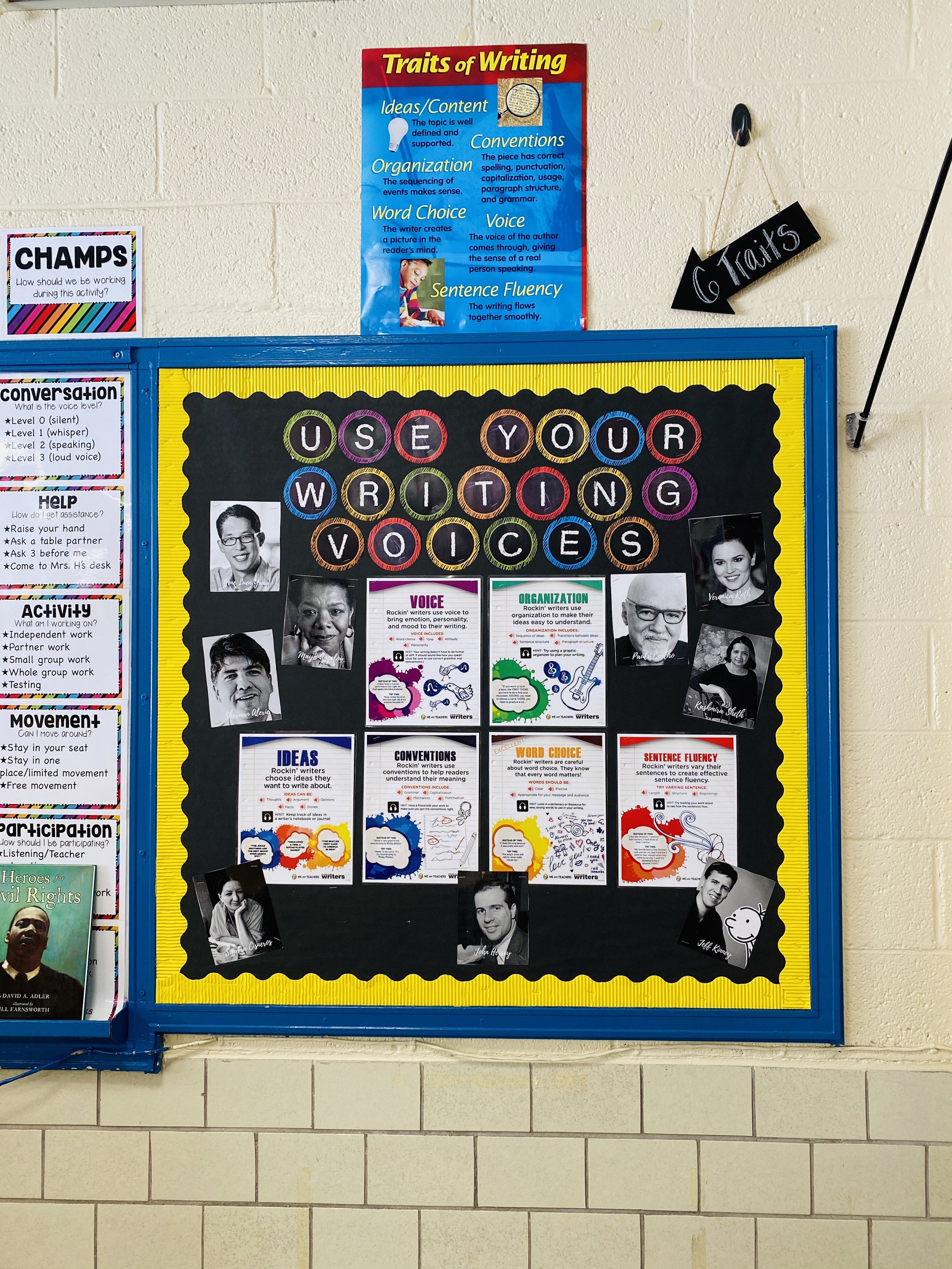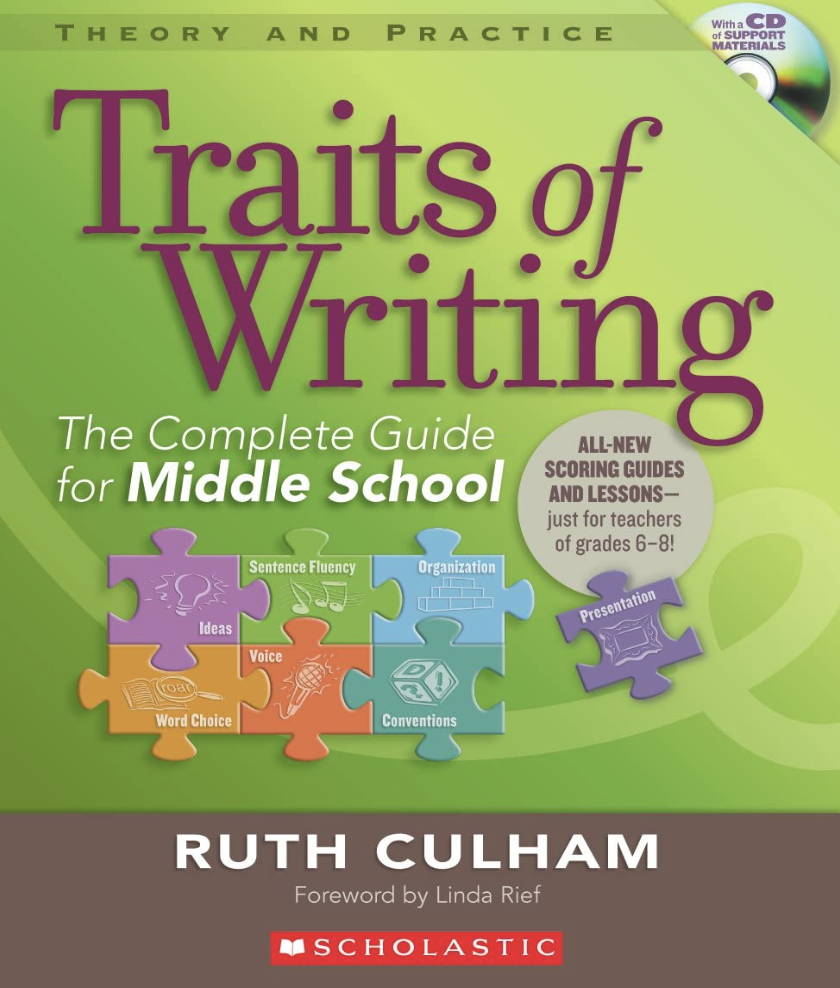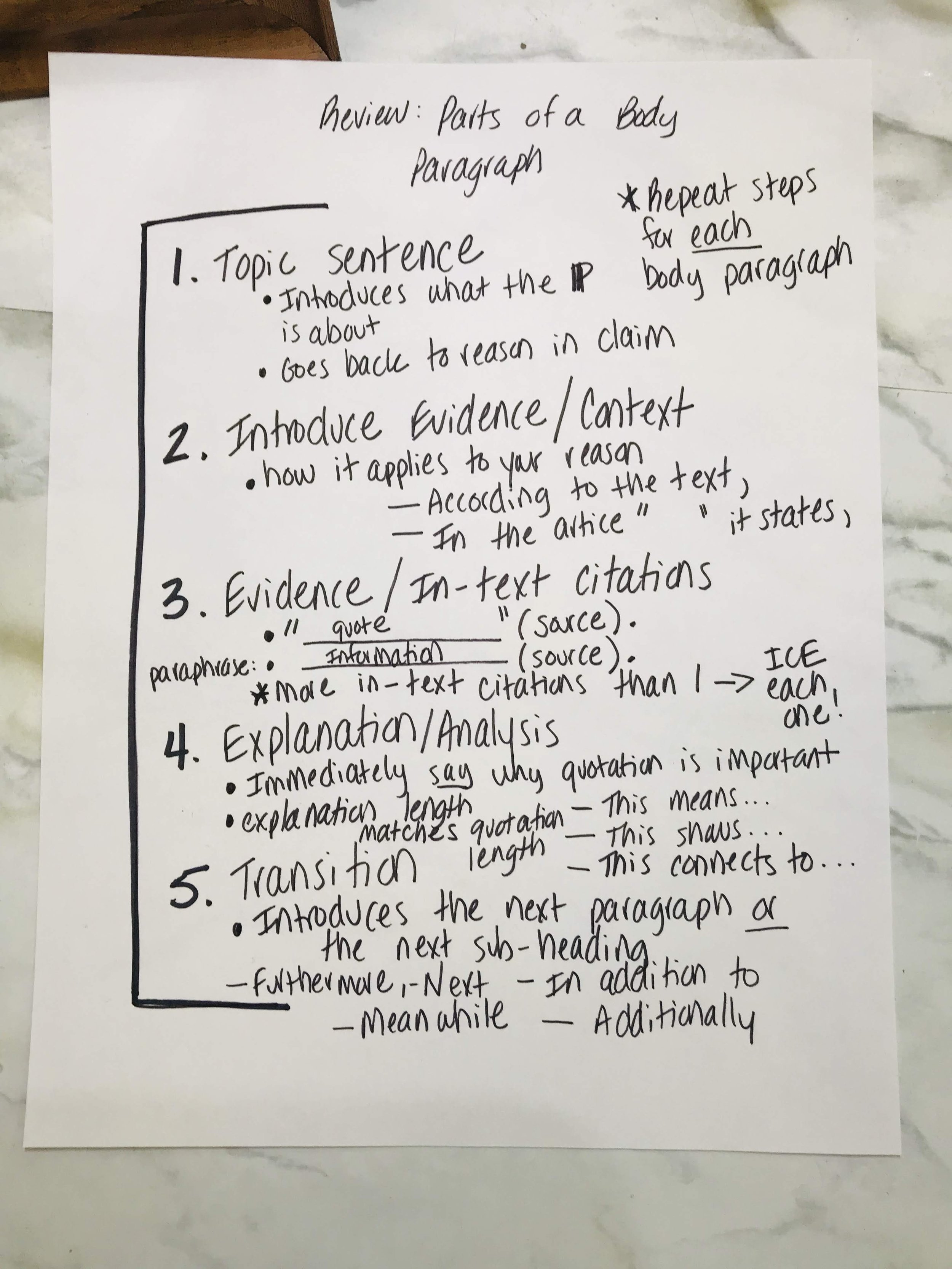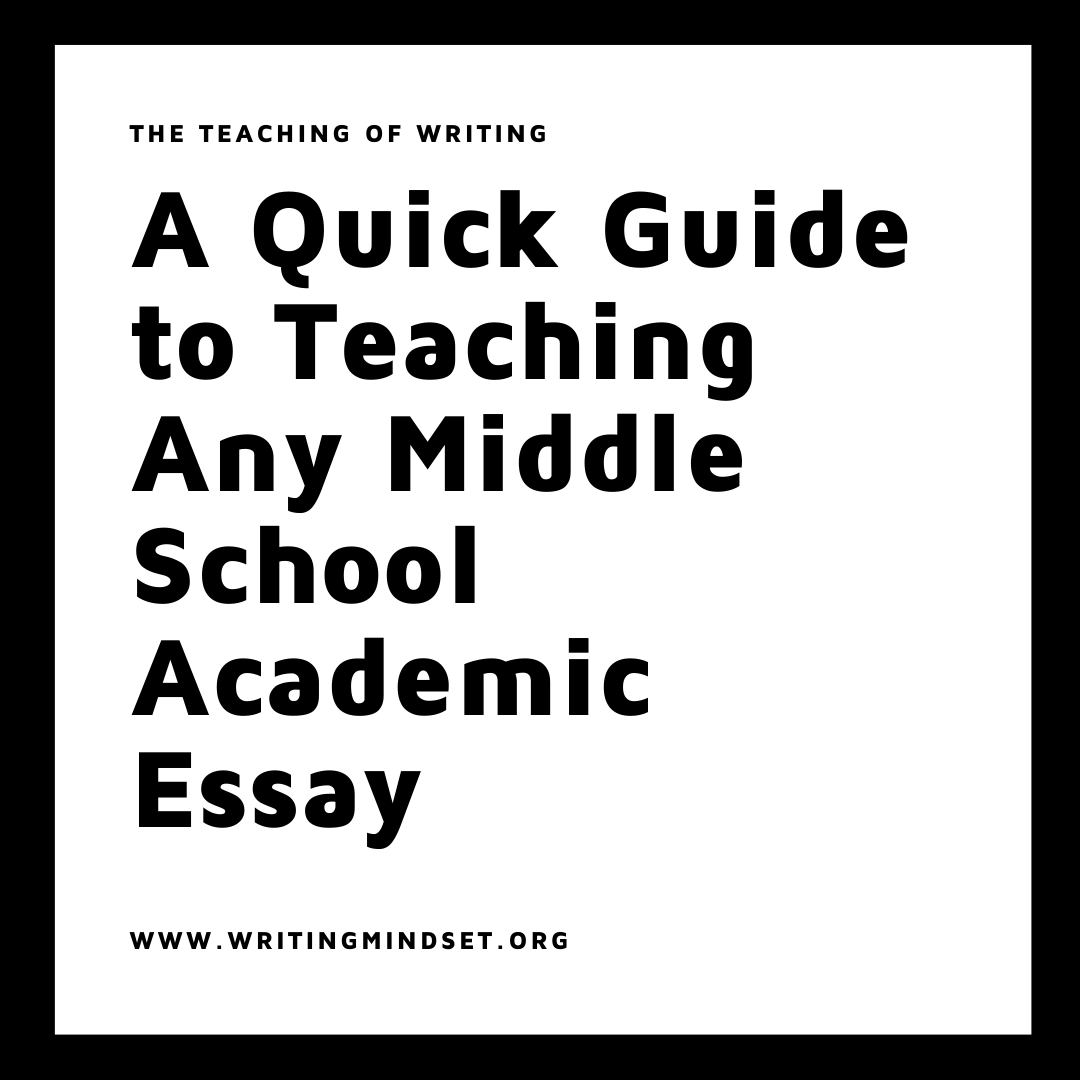A Guide to Teaching Any Middle School Academic Essay
Using the Six Traits of Writing to Teach the Building Blocks of Any Academic Essay
Disclosure: Writing Mindset only endorses things that I’ve personally used, something similar, or come highly recommended by trusted peers. If you grab anything I mention using a referral link, I may get a small commission. However, there’s no extra cost to you. If you would like to learn more, please visit the privacy policy and disclosure page.
Whenever I sat down with my middle school English team, met with a colleague for curriculum planning, or chatted with teachers across departments, one question always surfaced: “How do you teach the essay?” or “What parts need to be taught to students?”
As I continue working with more and more teachers, I’ve noticed that the academic essay is often assigned based on a teacher’s own learning experiences, their mentor’s approach, or a set of commonly accepted skills that are rarely questioned. I’m not claiming that my method of teaching essays is better than anyone else’s. Instead, this post serves as a starting point for a larger conversation about how the academic essay is implemented across grade levels. The goal, ultimately, should be consistency.
In this post, I’ll use the Six Traits of Writing as a shared language for teaching writing in the classroom. I’ll also outline the essential components of an academic essay—what I refer to as the building blocks.
Just like physical building blocks, these parts can be removed, rearranged, or used differently depending on the purpose of the assignment. The same concept applies here: consider each part as an area where you can choose to emphasize, adapt, or even skip depending on what your students need. I like the Six Traits of Writing because they provide flexible, universal terminology that applies across genres and writing types.
The academic essay can feel overwhelming to teach because it’s often viewed as a rigid form. But in reality, there’s quite a bit of flexibility, depending on the teacher’s experience, the grade level, and the writing genre. In my experience, success in teaching essay writing comes from two things: using a consistent structure and adopting a shared language. When teachers have a common understanding of these areas, it leads to better conversations about writing—and more clarity, purpose, and structure for students.
What do I mean by academic essay?
An academic essay boils down to an essay that is assigned with a specific prompt and has a particular structure. There is a common expectation for how the assignment will be graded whether that involves teacher feedback, rubrics, or other evaluation tools. This could include many different types of writing including, but not limited to:
Narrative (Personal, descriptive, viewpoint, historical, linear, non-linear)
Expository (Informational, cause & effect, problem & solution, compare & contrast, definition, classification, process)
Argumentative (Persuasive, research, analysis, personal)
Literary Analysis (8th-grade and higher) Note: Literary Analysis is not included in this post.
The expectation is that everyone completes a similar assignment under a number of specified guidelines and a certain set of skills are included in the objectives of the assignment.
Why the Six Traits of Writing?
Traits of Writing: The Complete Guide for Middle School
“The traits have revolutionized the way writing is taught. And nobody knows the traits better than Ruth Culham, who has written over 25 books and conducted countless workshops for teachers of all grades. Now, Ruth turns her expert eye to middle school. The Traits of Writing: The Complete Guide for Middle School contains classroom-tested materials developed just for teachers of grades 6-8. Brand-new scoring guides, scored sample papers, Think Abouts, warm-up exercises, focus lessons, and activities for each trait, organized by that trait’s key qualities, make it easy to assess writing and deliver targeted instruction. Includes printable reproducible forms!”
USE YOUR WRITING VOICES!
VOICES is an acronym to remember each part of the Six Traits of Writing. The Six Traits of Writing is a writing framework made largely popular with the books created by Ruth Culham. Often, they are also called Six +1 Traits of Writing when you add the element of Presentation into the equation. Again, this framework applies to all types of writing, so as we move throughout the blog post, you will see how I apply the ideas of the Six Traits of Writing to the academic essay. I also use this framework to help guide my feedback. This is a bonus if you are a newer or pre-service teacher and you are asked, “How are you going to grade this assignment?” Some of these feedback points can be great places to start when it comes to assessing student work.
While it is called VOICES as a way to help you remember what the Six Traits of Writing are called, the order they should be taught is the following:
Ideas
Organization
Voice
Word Choice
Sentence Fluency
Conventions
In middle school, the majority of the time spent on teaching material is on ideas and organization; however, I find many teachers get caught up with teaching and assessing conventions and word choice. While they are important, it is more important to make sure that the awesome ideas that kids have in their minds are getting down on the page. There are some classes that never move on from ideas and organization. As long as you are meeting students where they are, you are able to help move them forward.
The goal is to balance all of the Six Traits of Writing in any given writing piece.
The Six Traits of Writing Explanation and Examples
Voice-The tone and presentation of the piece
Voice will be determined by the genre of writing. When we start the year with narrative writing, students are introduced to points of view and the first-person, second-person, and third-person. Often, for more informal writing, first-person narration and pronouns are used quite often. In more formal papers like an argument paper or a research paper, a teacher might specify to use third-person narration and pronouns only. This would take the many “I think that…” out of a student’s writing piece and replace them with more direct examples.
Some standards to go by if stuck:
Narrative Writing uses first-person and second-person
Expository Writing uses first-person and third-person depending on the assignment
Argumentative Writing uses third-person depending on the assignment
Example Voice Teacher Feedback Comments:
Third person pronouns only
Too informal of a tone, writing sounds like a casual conversation
Robot writing. Writing does not sound like you.
Remove narration of your own writing. Example: I’m going to show you an example of...
Organization-How the writing is presented to the reader, what goes where
The organization of an academic essay largely depends on who is teaching the setup. All teachers should include examples and give a lesson on how they think an essay should be organized before assigning a paper. Many teachers start with the five-paragraph model as a beginning point on how to show students what a piece of writing should look like. Some people despise the five-paragraph essay. For the sake of this post, I am going to show you the setup that worked for me for over 10+ years of teaching for both a paragraph with evidence and an overall essay. The organization will change depending on genre and assignment, but these are two examples to get you started.
Example Paragraph Setup:
Topic Sentence
Supporting Detail-Introduces Evidence
Supporting Detail-States and Cites Evidence
Supporting Detail-Explains Evidence (This part may be more than 1 sentence depending on the amount of evidence presented)
Concluding Sentence/Transition
Example Essay Setup:
Introduction
Hook/Attention Grabber
Summary of Issue/Topic
Claim Statement/Position Statement/Thesis Statement
Body Paragraph (Similar to Paragraph Setup Above)
Topic Sentence (Goes back to claim reason)
Supporting Detail-Introduces Evidence
Supporting Detail-States and Cites Evidence
Supporting Detail-Explains Evidence (This part may be more than 1 sentence depending on the amount of evidence presented)
Concluding Sentence/Transition
**Repeat for each body paragraph**
Conclusion
Restate Claim
Review Reasons
Call-to-Action
Example Organization Teacher Feedback Comments:
Hook missing.
Topic sentences need to go back to reason in the claim
Introduce evidence with a signal phrase
Needs transition words between paragraphs
Needs to restate the claim in the conclusion
The conclusion needs to have a call-to-action
New idea=new paragraph!
Needs a creative title.
Paragraph off-topic
Missing evidence to support reasons
Ideas- The main idea, supporting details, evidence, and explanation
Ideas are the heart of any good paper. This is where you get the argument, the main idea, or the details that really bring the paper to life. Ideas should be the first thing discussed and brainstormed in the writing process. I often recommend using a graphic organizer to help students get their ideas down in a logical way.
Example Ideas Teacher Feedback Comments:
Claim is missing
More background information/summary needed in the introduction
Provide more explanation of evidence in your paragraphs. State why the evidence matters and how it relates to the reason.
Counter-claim is not present/not clear
A repeat of ideas already stated before.
Remove personal opinion
Stating the obvious.
Remove retell of a book or story
Conventions-Editing process involving grammar, punctuation, spelling, and capitalization
Conventions are the typical copy-editing marks that get circled or corrected on a draft. The use of computers has largely made spelling errors an easy conventions mistake to fix before draft turn-in day. Capitalization is also easily corrected. The ideas around grammar and punctuation may require more direct teaching or lessons to help kids learn the rules around these areas.
Example Conventions Comments:
Spelling. Misspelled word.
Comma usage. Insert or delete a comma.
Period usage: Insert or delete a period.
Capitalization error(s)
Missing quotation marks.
Punctuation with quotation marks. Periods and commas always go inside quotation marks.
Cite evidence with quotation marks and page number
Indent paragraphs.
Title formatting. Italicize book titles!
Excellent Word Choice-Vivid word selections to help with meaning, clarity, and interest
This is where the revision and editing process can get more fun! Helping students learn about vivid verbs and swapping out the general “things” and “stuff” for more interesting words is half the fun when working with students on an academic essay. Perhaps, if you have a group of students who use a ton of boring words over and over again, you can have a sort of “word funeral” to outlaw them from some drafts. I did this around Halloween one year, and the kids loved it. You can also have them doing brainstorms on posters for words that are better to use in their papers. Kids love synonyms. Show them how awesome words are on paper and in real life.
Example Word Choice Comments:
Unnecessary words. This section is fluff, filler, or material that just takes up space without saying anything new.
Overused word (s). You seem to use the same word over and over again.
Switch out the word for a more interesting word. Find a synonym.
Needs powerful and active verbs.
Include more adjectives to help your writing with description.
Write out the number. Example 2=two.
Write in present tense. You are talking ABOUT the text now.
Vague pronoun
Sentence Fluency-How the writing SOUNDS, the rhythm and pace
This is one of the more advanced traits to teach, and also the reason why it is second to last on my priority list when I am looking at the Six Traits of Writing. In middle school, you will be focusing on sentence fragments and run-ons. These can also be helped with lessons on punctuation. The goal is to help kids realize that their writing has a particular sound, and the bigger goal is to help them realize that their writing should sound like them-no matter the voice they are using in their writing.
Example Sentence Fluency Comments:
Awkward phrasing/choppy. Avoid choppiness in your writing. You likely have stacked several short sentences together or repeatedly used the same sentence starter. Combine sentences together to connect your ideas and make your writing flow.
Vary how you start sentences. Start sentences with different words.
Vary your sentence length. A lot of your writing sounds the same because the sentences are the same length.
Sentence fragment. A sentence must have a complete thought. Your sentence is missing a piece.
Run-on sentence. Break up your longer sentence into two or three.
What are the building blocks in academic writing?
The BLOCK method breaks down the writing process into five key steps: Brainstorm, Layout, Outline, Construct, Kick it up a notch. Let’s explore how each step aligns with the Six Traits of Writing: Ideas, Organization, Voice, Word Choice, Sentence Fluency, Conventions.
🧠 B is for BRAINSTORM
Traits Focus: Ideas + Voice
This is where students gather content—anything and everything that might relate to their topic or prompt.
What it looks like:
Listing personal experiences or facts
Quickwriting from a prompt
Creating mind maps, topic webs, or bullet lists
Identifying keywords, visuals, or genre expectations
📐 L is for LAYOUT
Traits Focus: Ideas + Organization
Here, students start making decisions about structure, central message, and how to group ideas.
What it looks like:
Choosing the type of essay (narrative, expository, argumentative)
Defining a central message or thesis
Looking at mentor texts to study structure
Grouping ideas into categories or sections
Sketching out an informal plan
🧱 O is for OUTLINE
Traits Focus: Organization + Sentence Fluency
Outlining gives students a roadmap. It's where they begin shaping paragraphs, evidence, and examples.
What it looks like:
Writing a clear introduction, body, and conclusion framework
Adding topic sentences and supporting details
Listing transitions or sentence starters
Checking logic and flow of ideas
🏗️ C is for CONSTRUCT (Draft)
Traits Focus: Voice + Sentence Fluency + Word Choice
Time to build paragraphs. This is where students flesh out their ideas into full sentences and use specific examples.
What it looks like:
Writing in full paragraphs
Using transitions and varied sentence structures
Explaining examples and avoiding repetition
Staying consistent with tone and purpose
🪜 K is for KICK IT UP A NOTCH (Revise & Edit)
Traits Focus: Word Choice + Conventions + All Traits
Revision and editing polish the work. It's where writers go beyond correctness to elevate their message.
What it looks like:
Replacing weak words with stronger ones
Cutting repetition and fluff
Reading aloud to hear awkward phrasing
Checking grammar, punctuation, and formatting
Asking for peer or teacher feedback



























